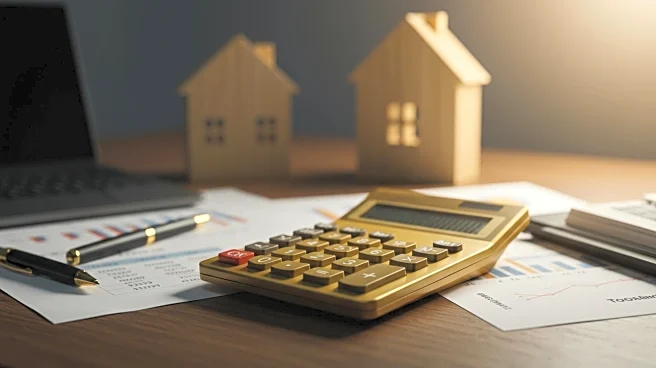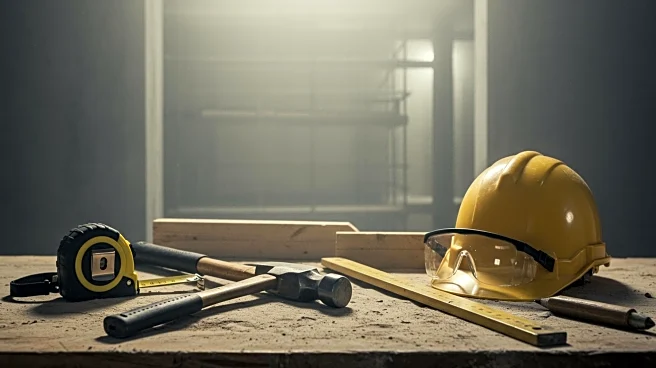What is the story about?
What's Happening?
Home Equity Lines of Credit (HELOCs) offer homeowners a way to leverage the value of their homes for various expenses, such as renovations or tuition. HELOCs provide a revolving line of credit with a 10-year draw period, during which only interest payments are required. After the draw period, a 20-year repayment phase begins, requiring full principal and interest payments. The average interest rate for HELOCs has been decreasing, making them an attractive option compared to personal loans and credit cards. Calculating HELOC payments involves understanding the interest rate and the loan amount, with specific formulas for both the draw and repayment periods.
Why It's Important?
HELOCs are a crucial financial tool for homeowners seeking flexible funding options. They offer lower interest rates compared to unsecured loans, making them a cost-effective choice for financing large expenses. Understanding how to calculate HELOC payments is essential for managing finances effectively and avoiding foreclosure risks. The tax-deductible nature of interest payments, when used for home improvements, adds to the appeal of HELOCs. As interest rates fluctuate, homeowners must stay informed to make strategic decisions about using their home equity.
What's Next?
Homeowners considering a HELOC should assess their financial needs and the potential benefits of leveraging their home equity. It's important to compare HELOCs with other financing options, such as home equity loans, to determine the best fit. As interest rates continue to change, homeowners should monitor market trends and consult with financial advisors to optimize their borrowing strategies. Additionally, understanding the implications of paying more than the minimum required can lead to faster equity growth and improved credit scores.
AI Generated Content
Do you find this article useful?











